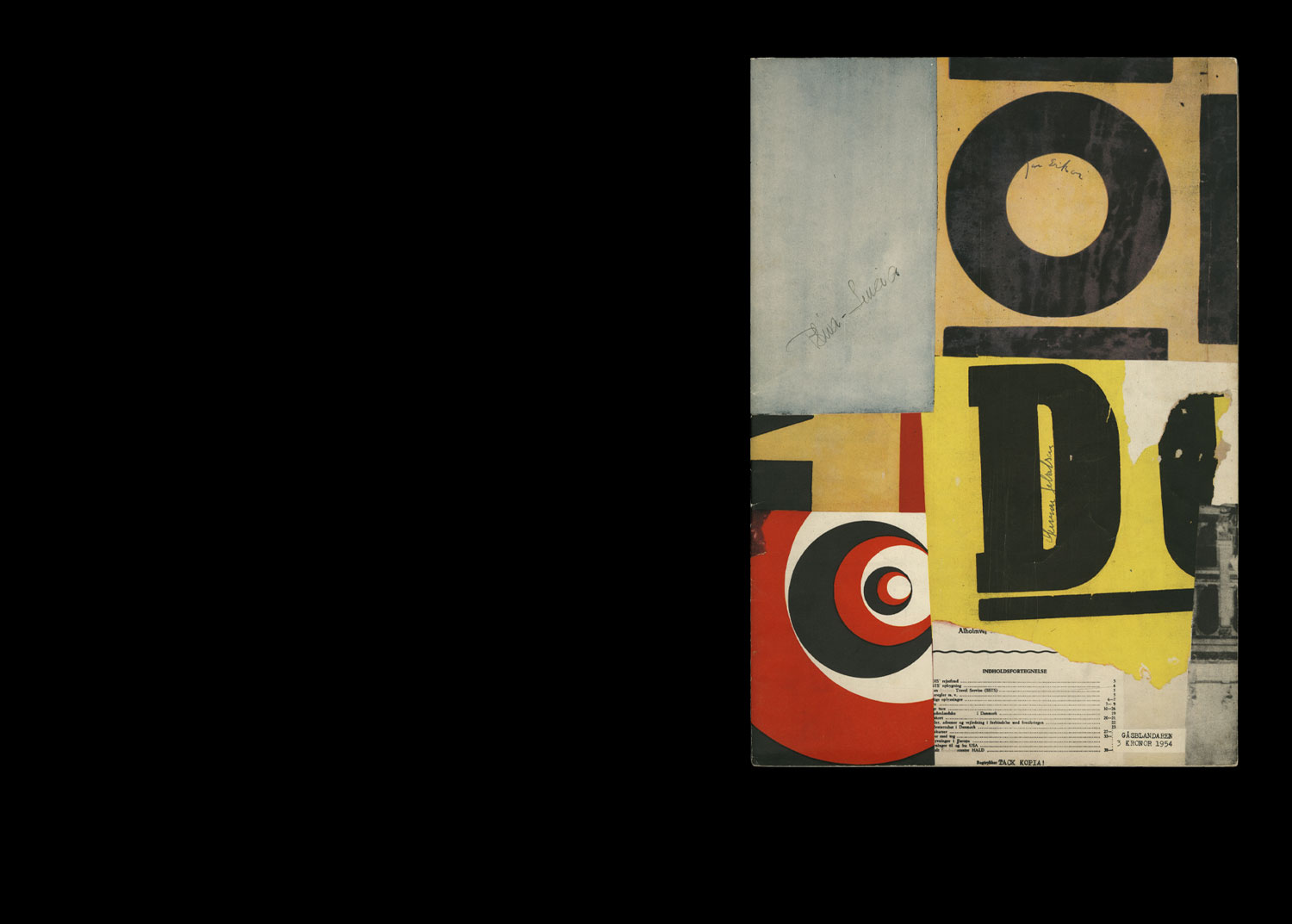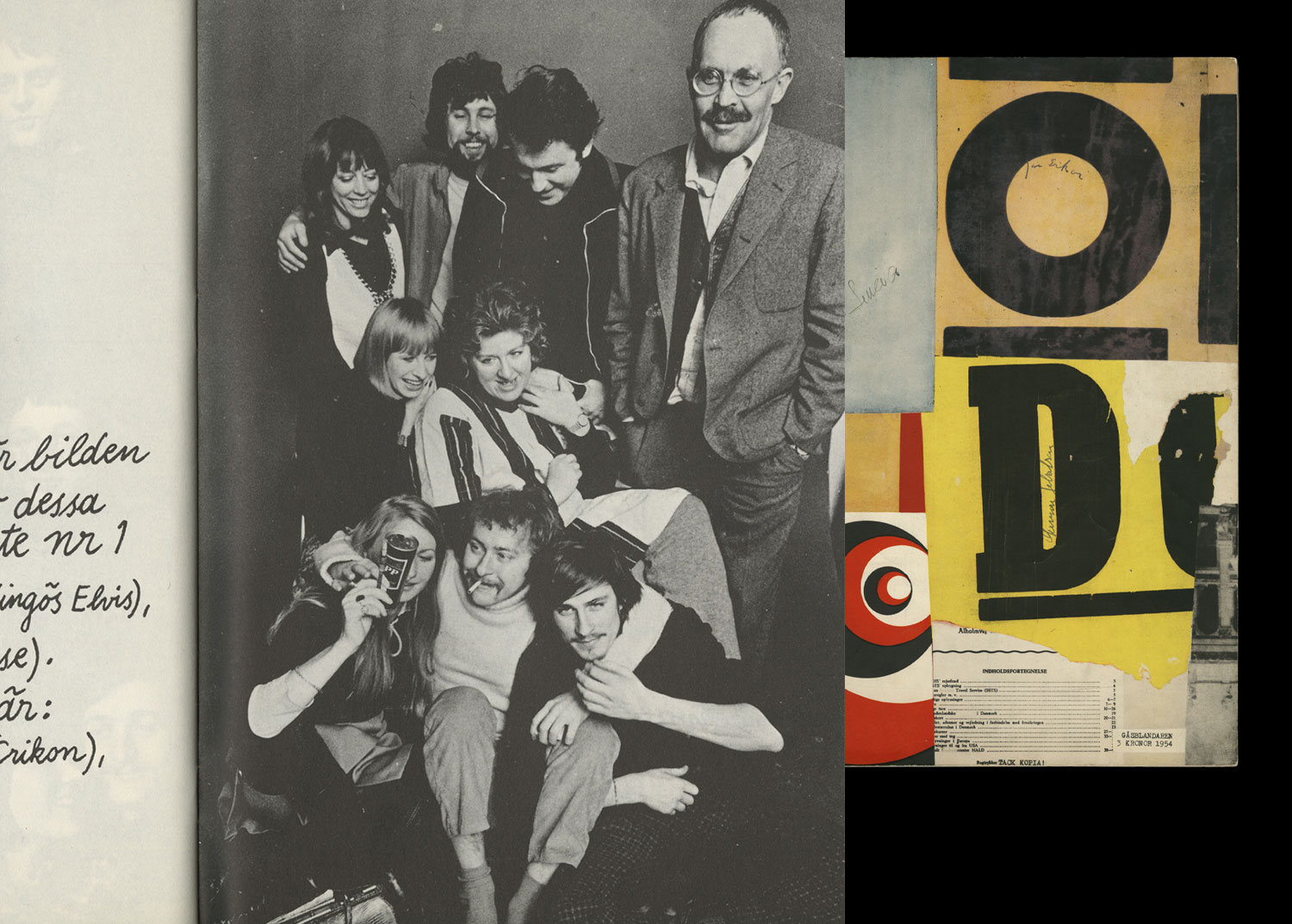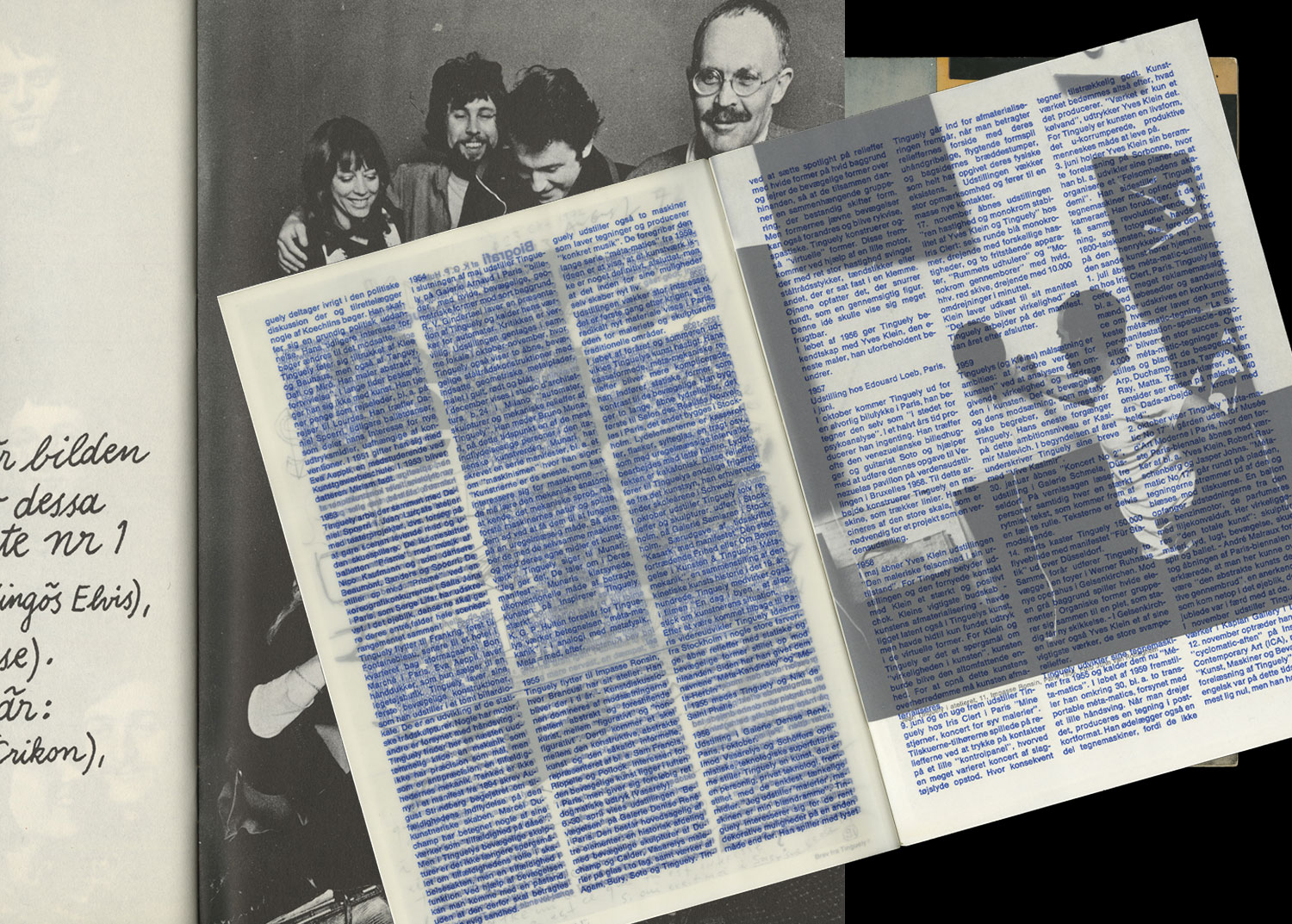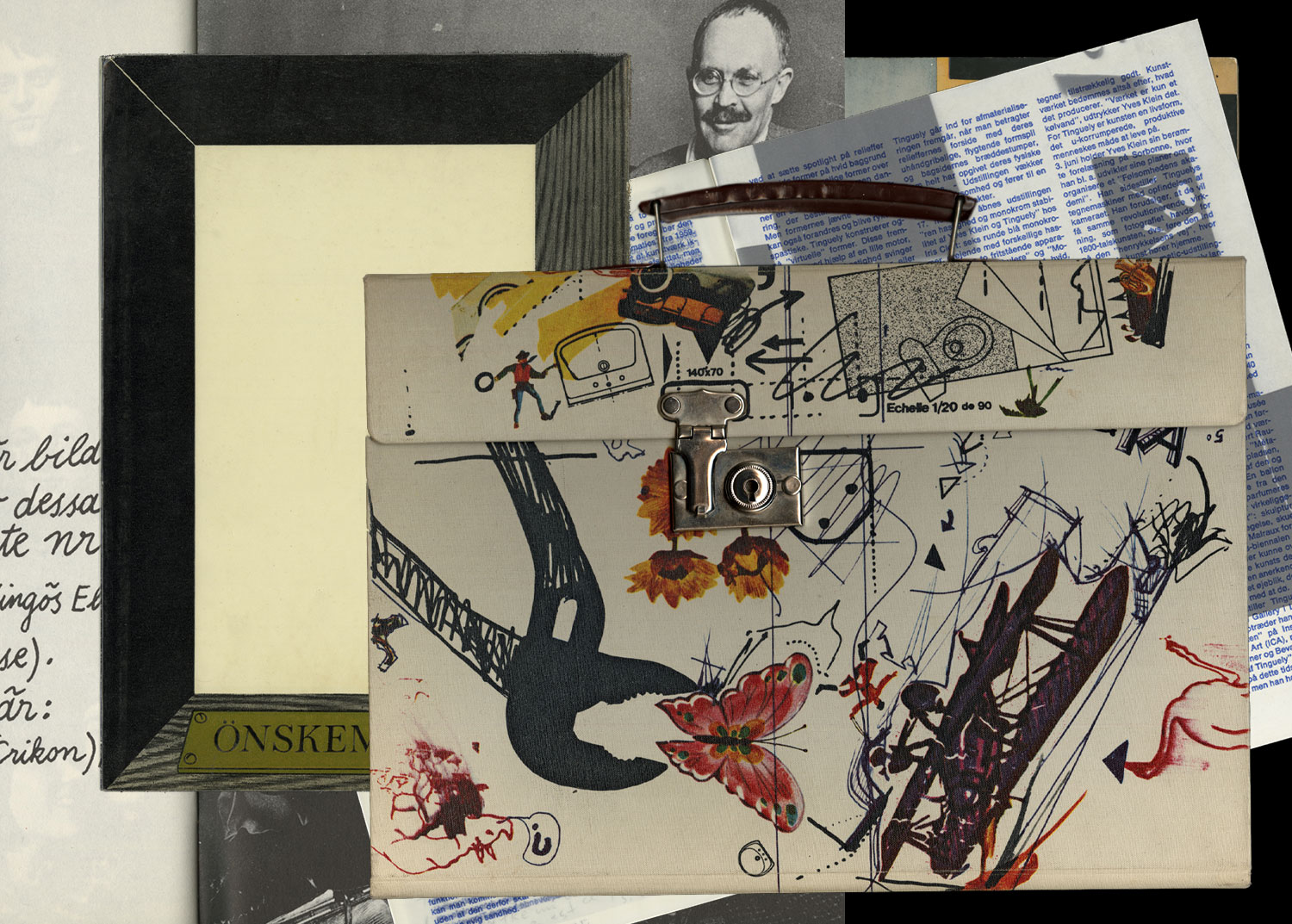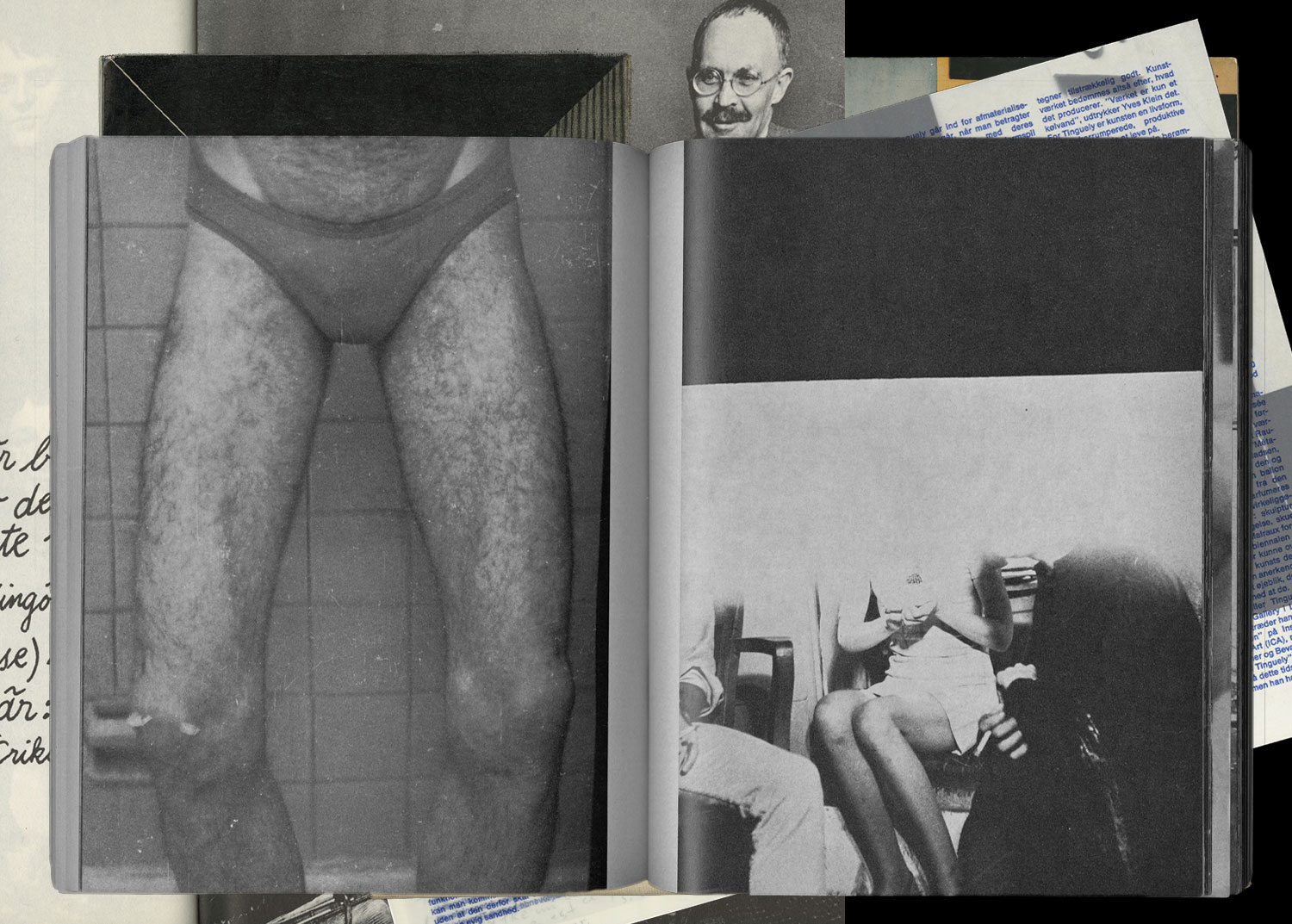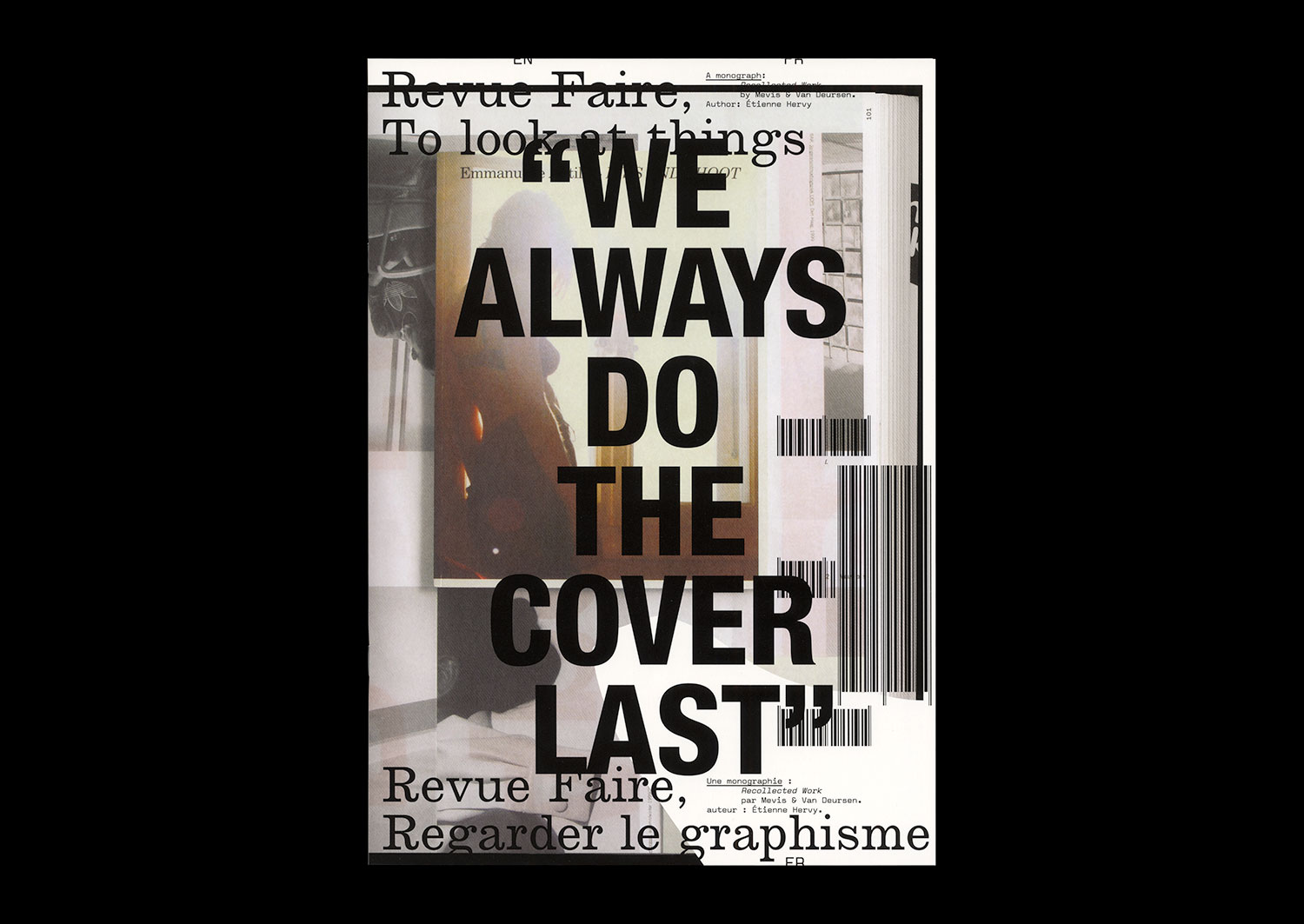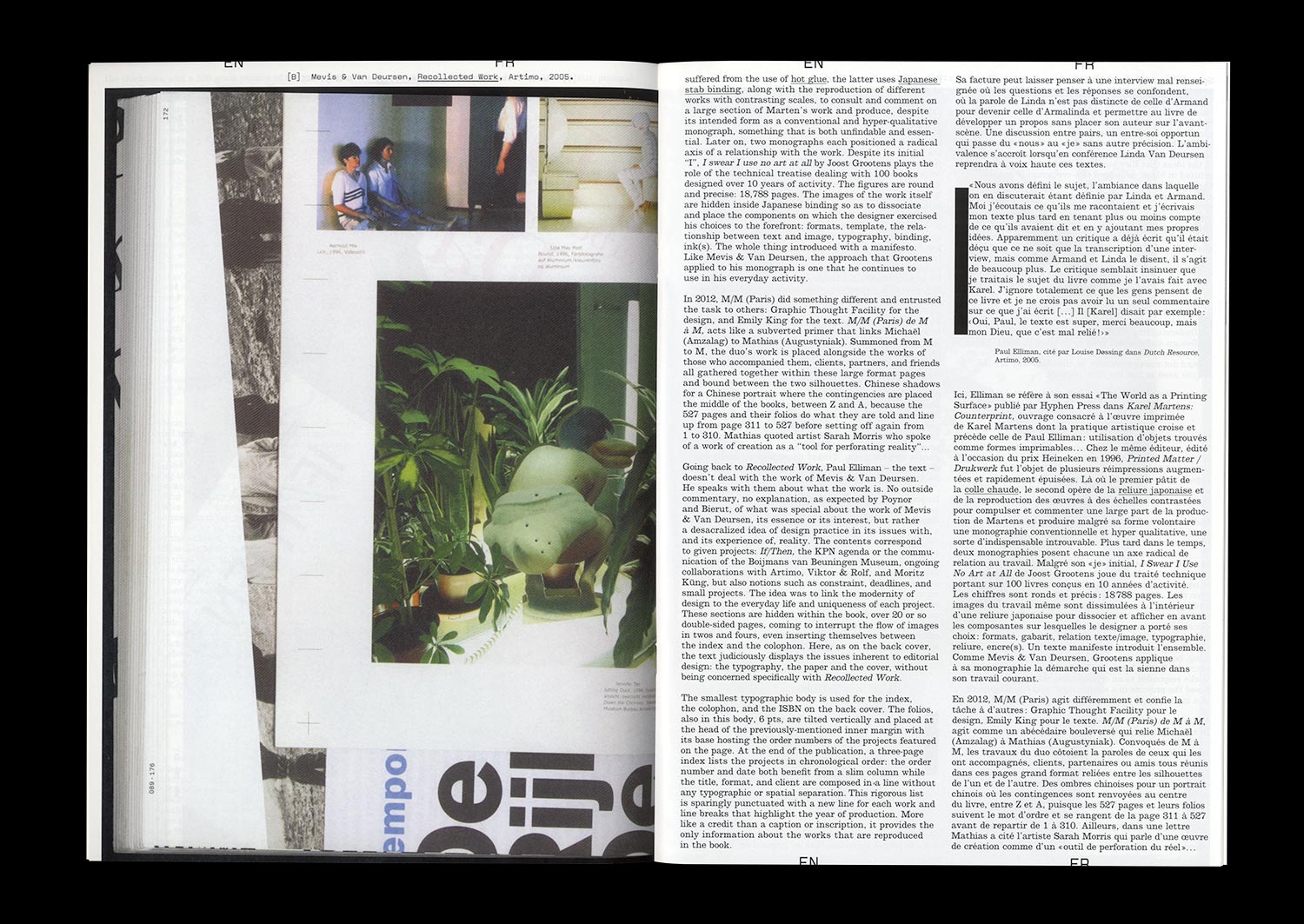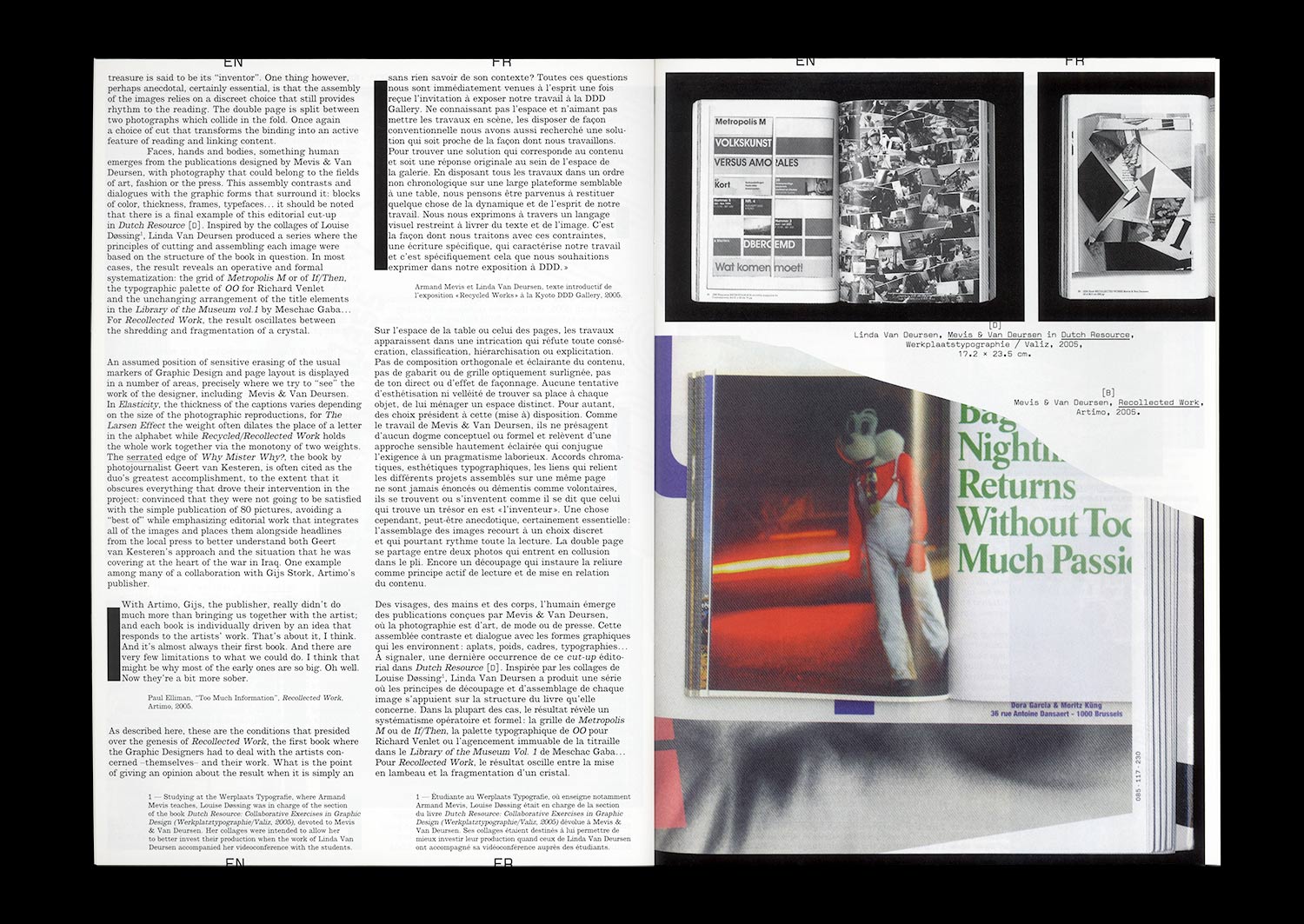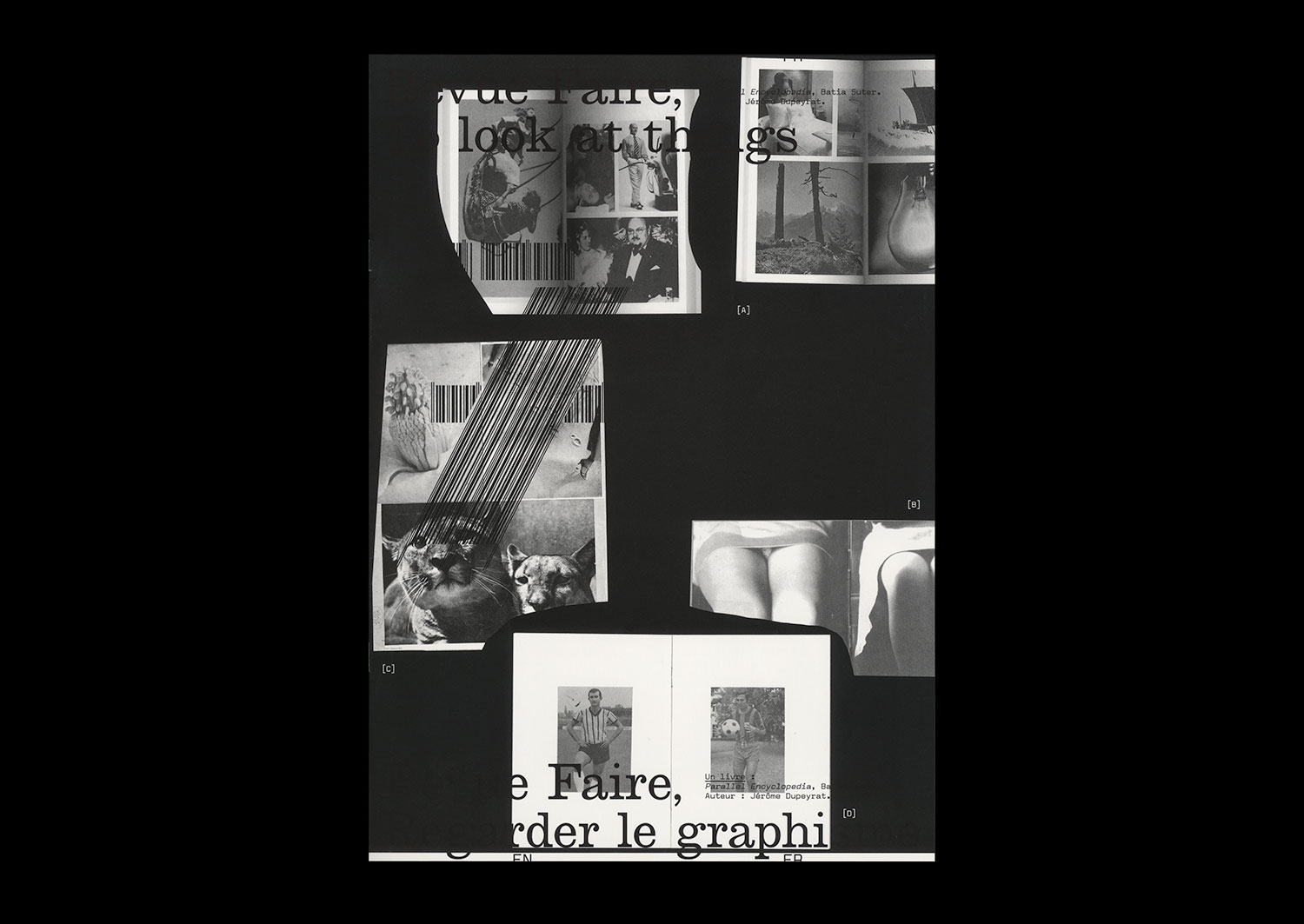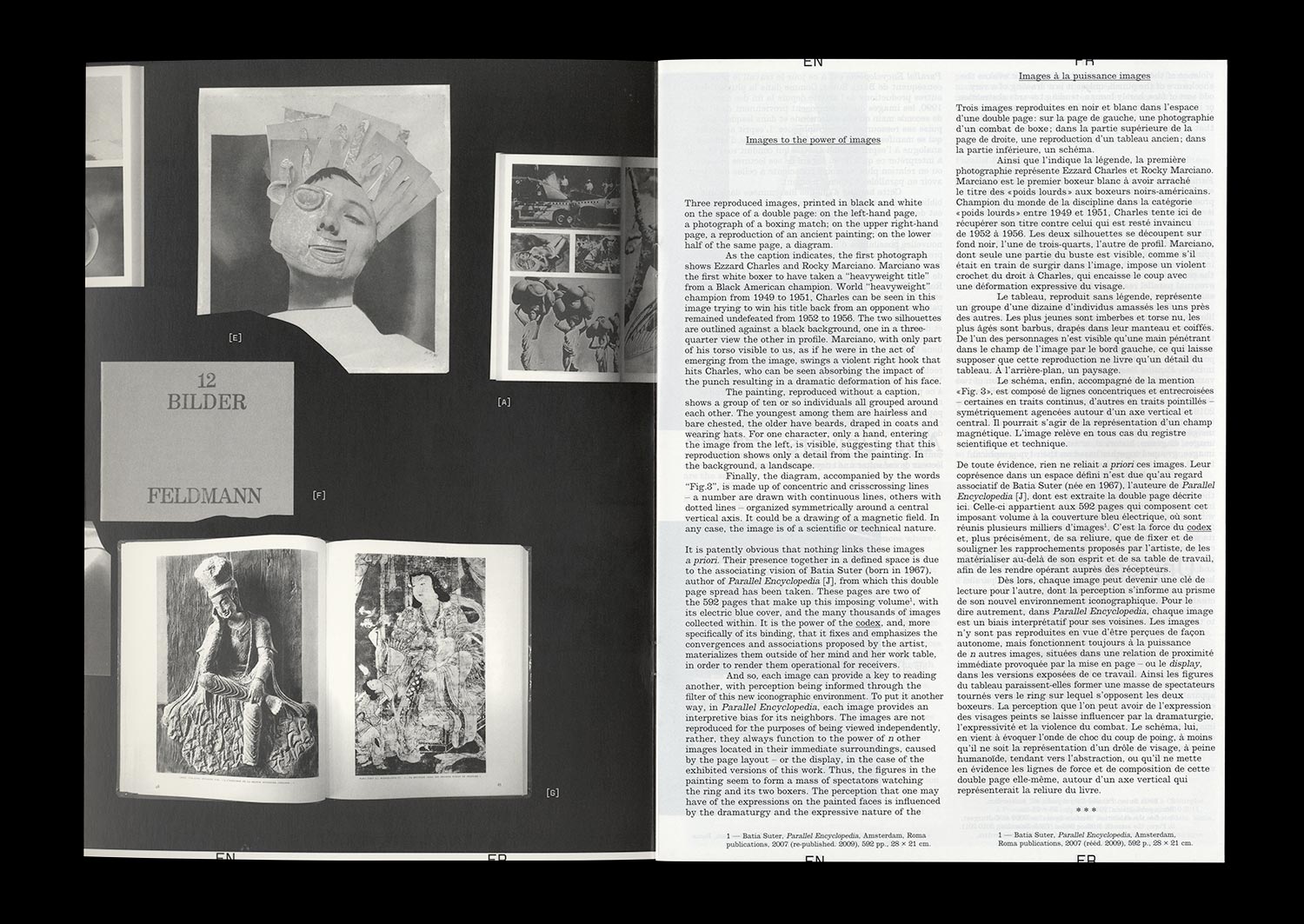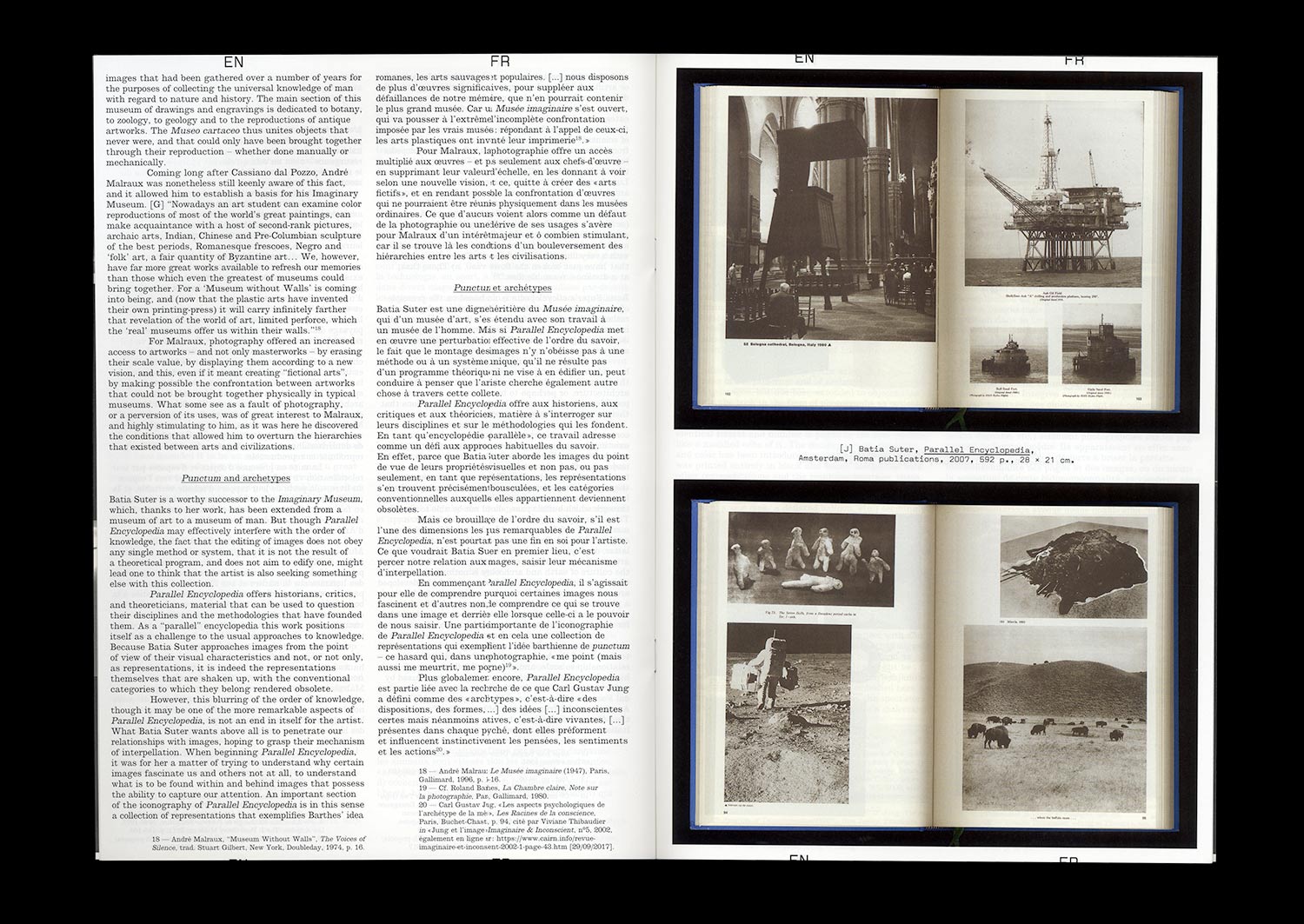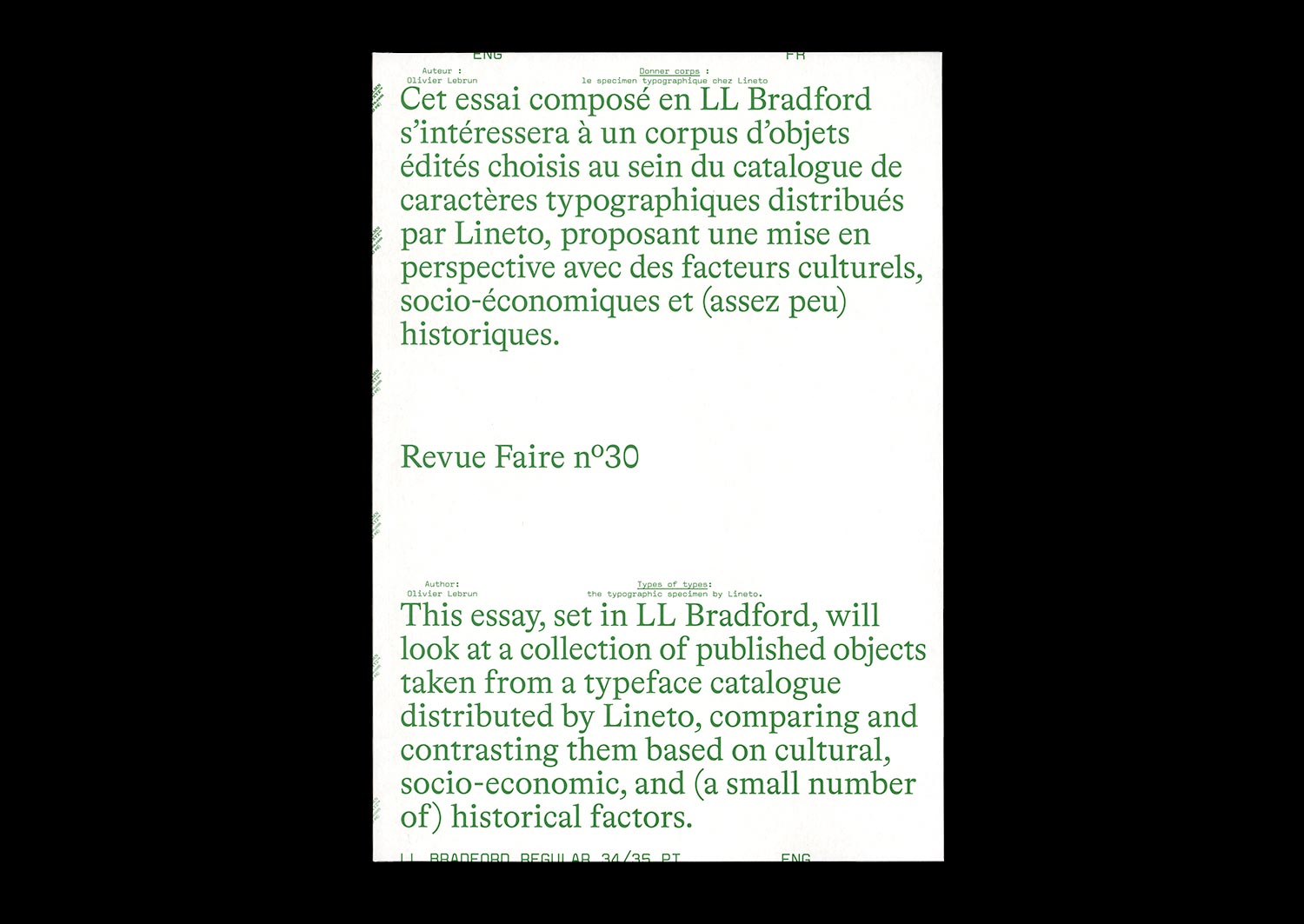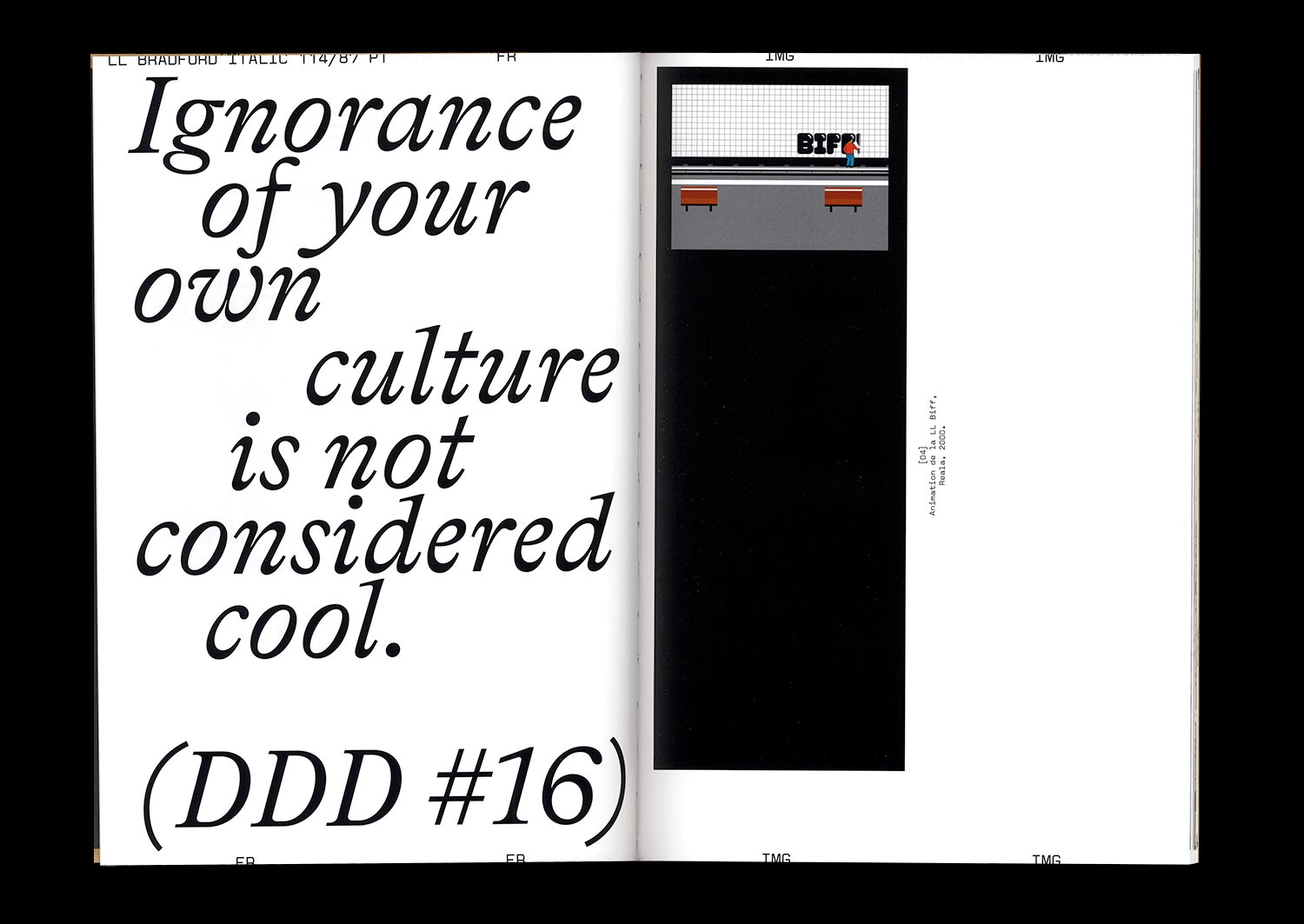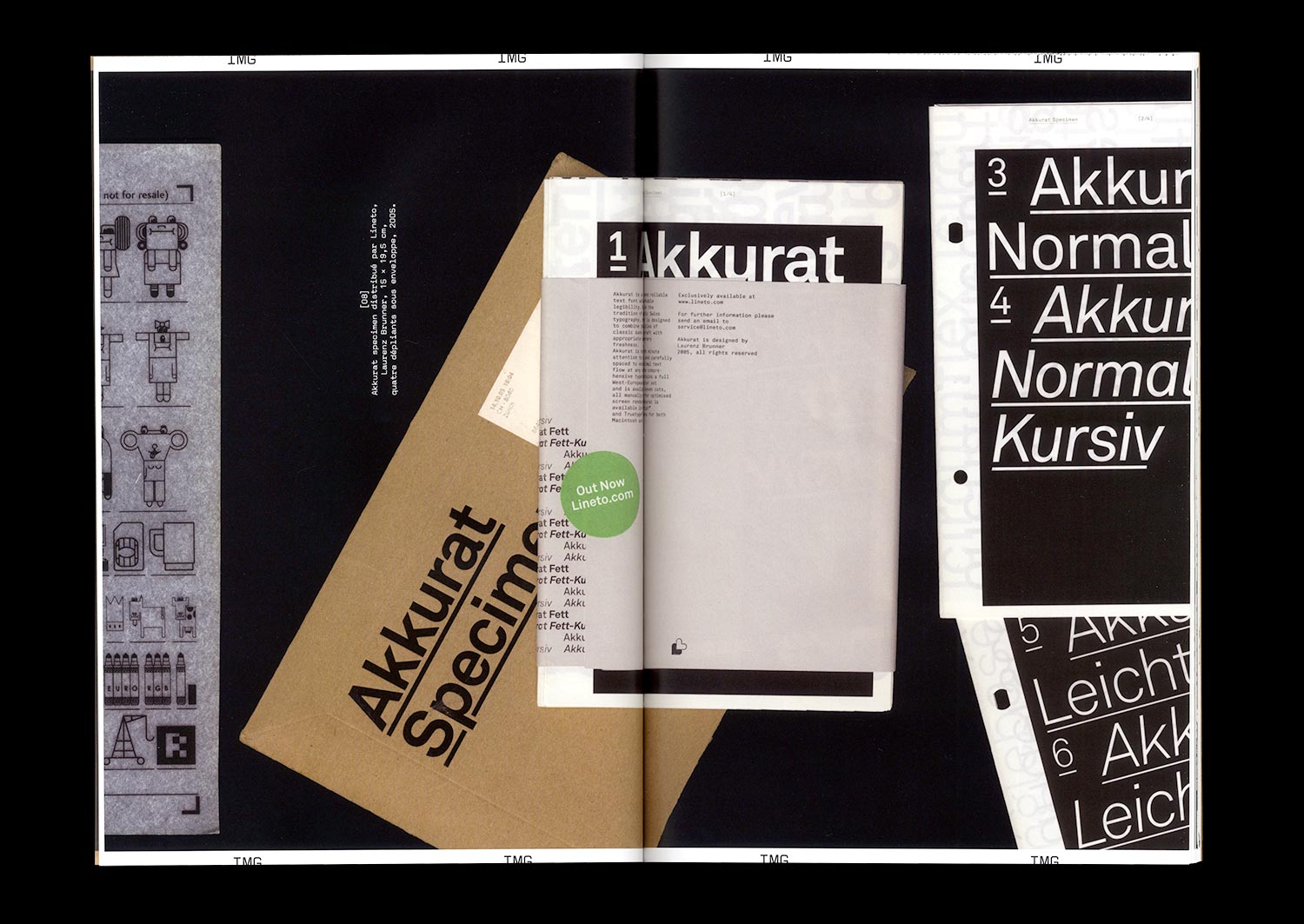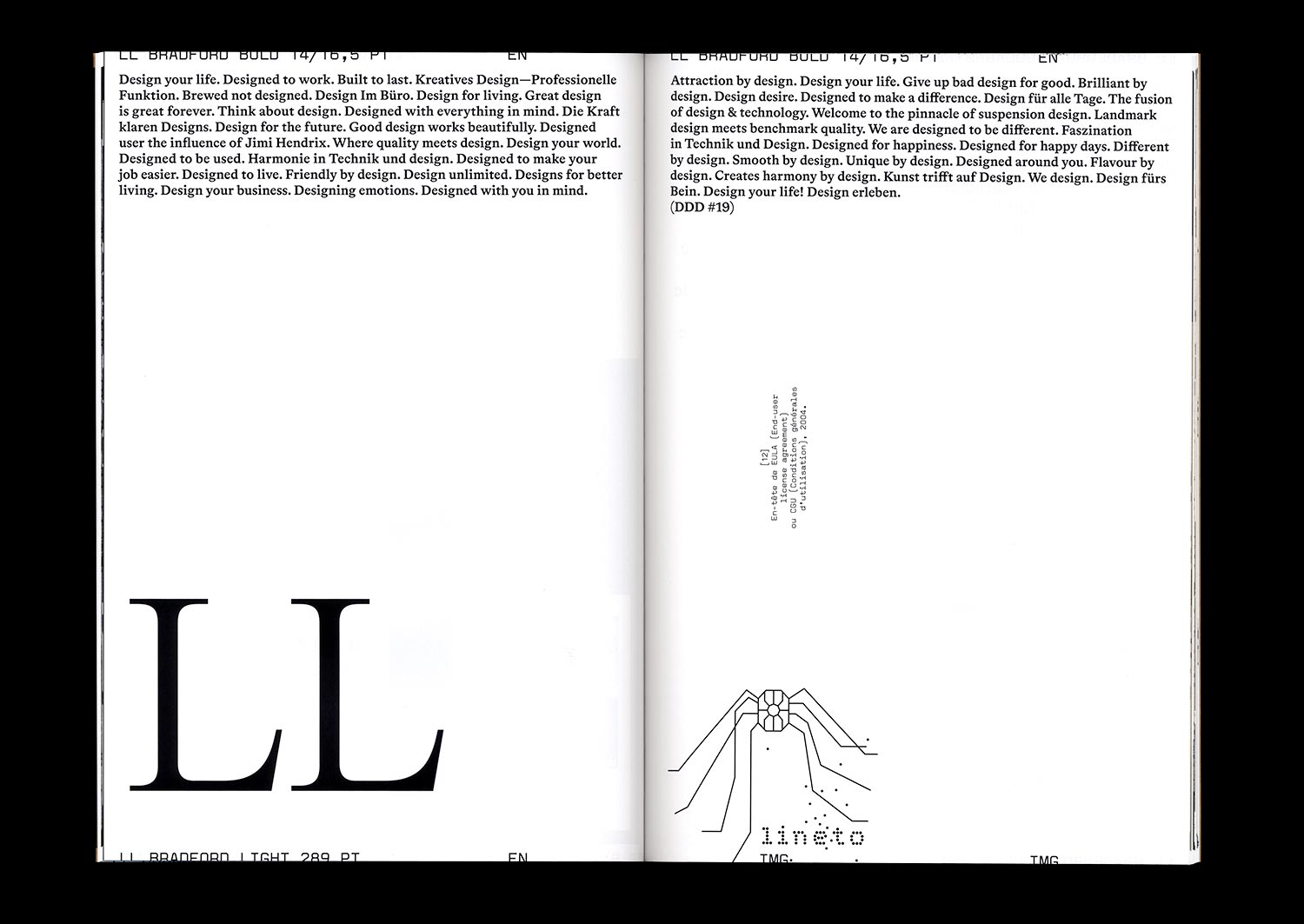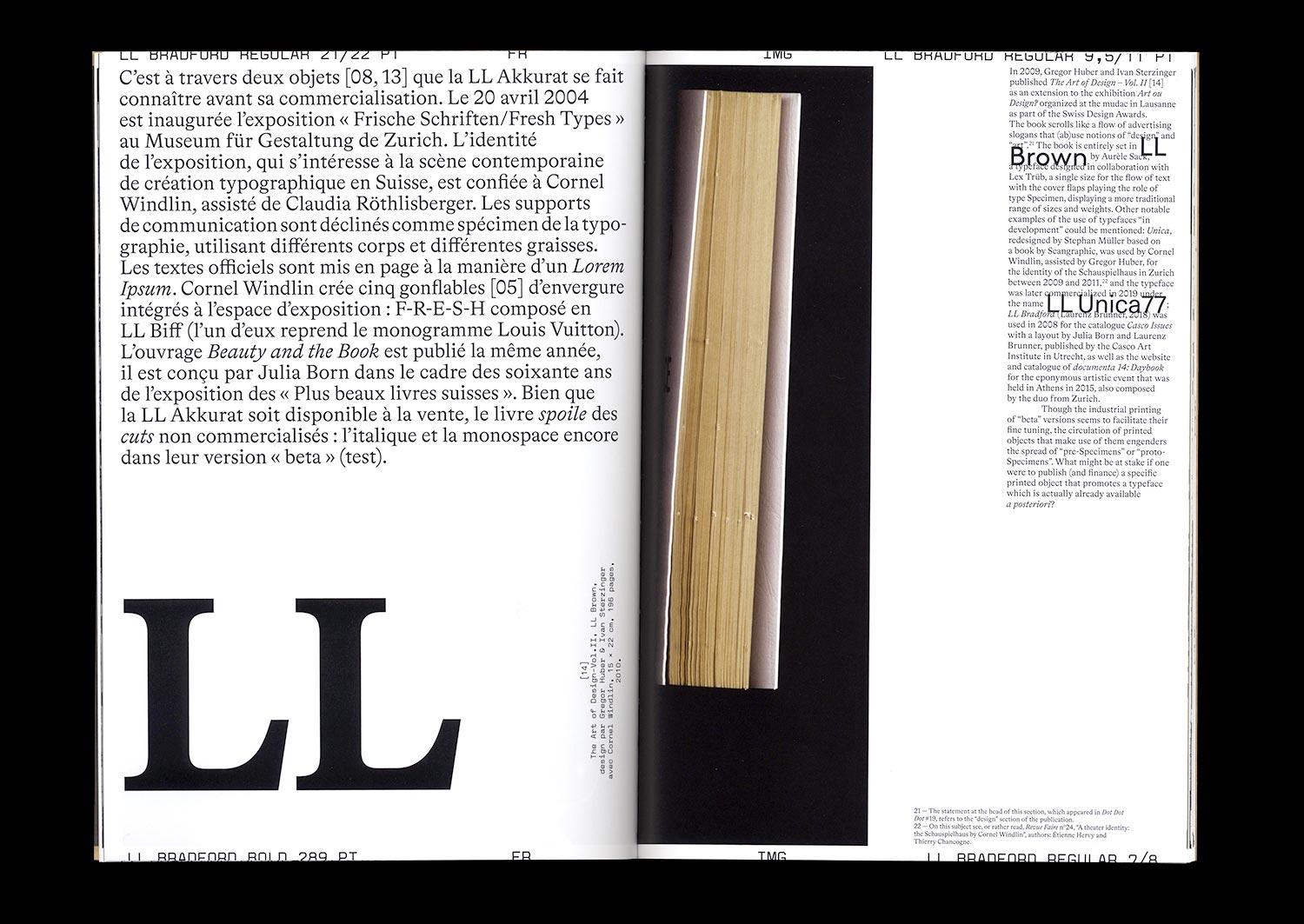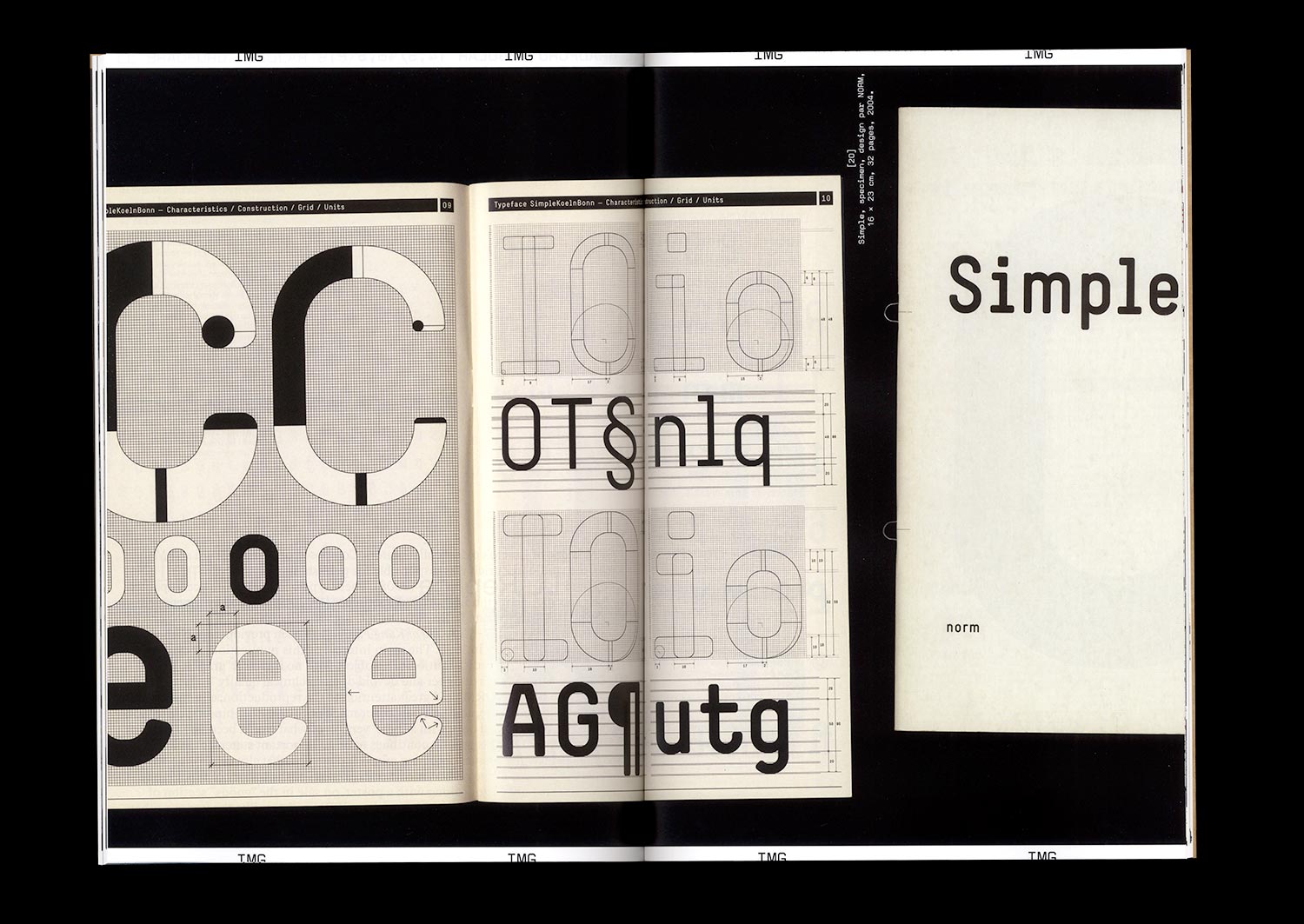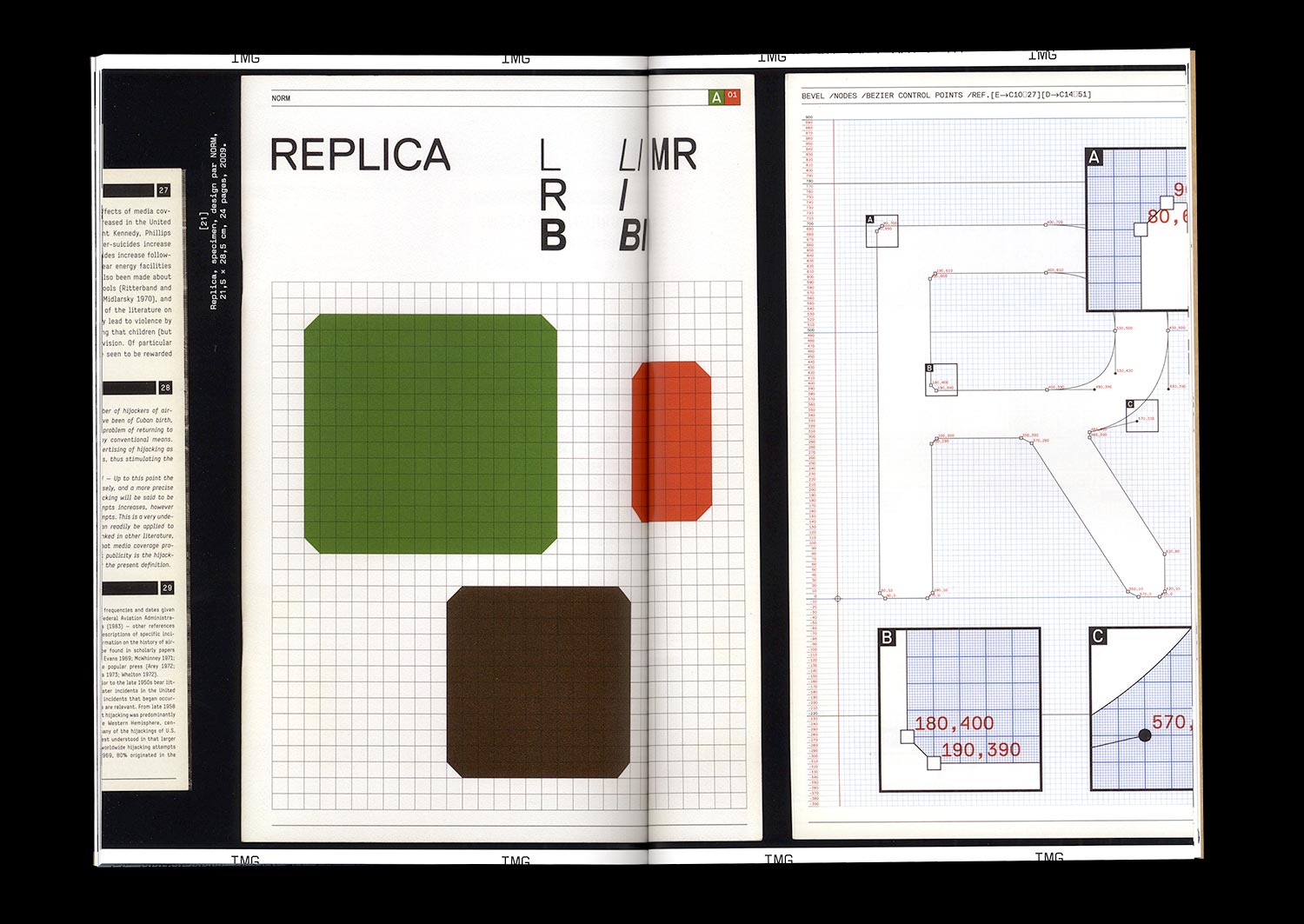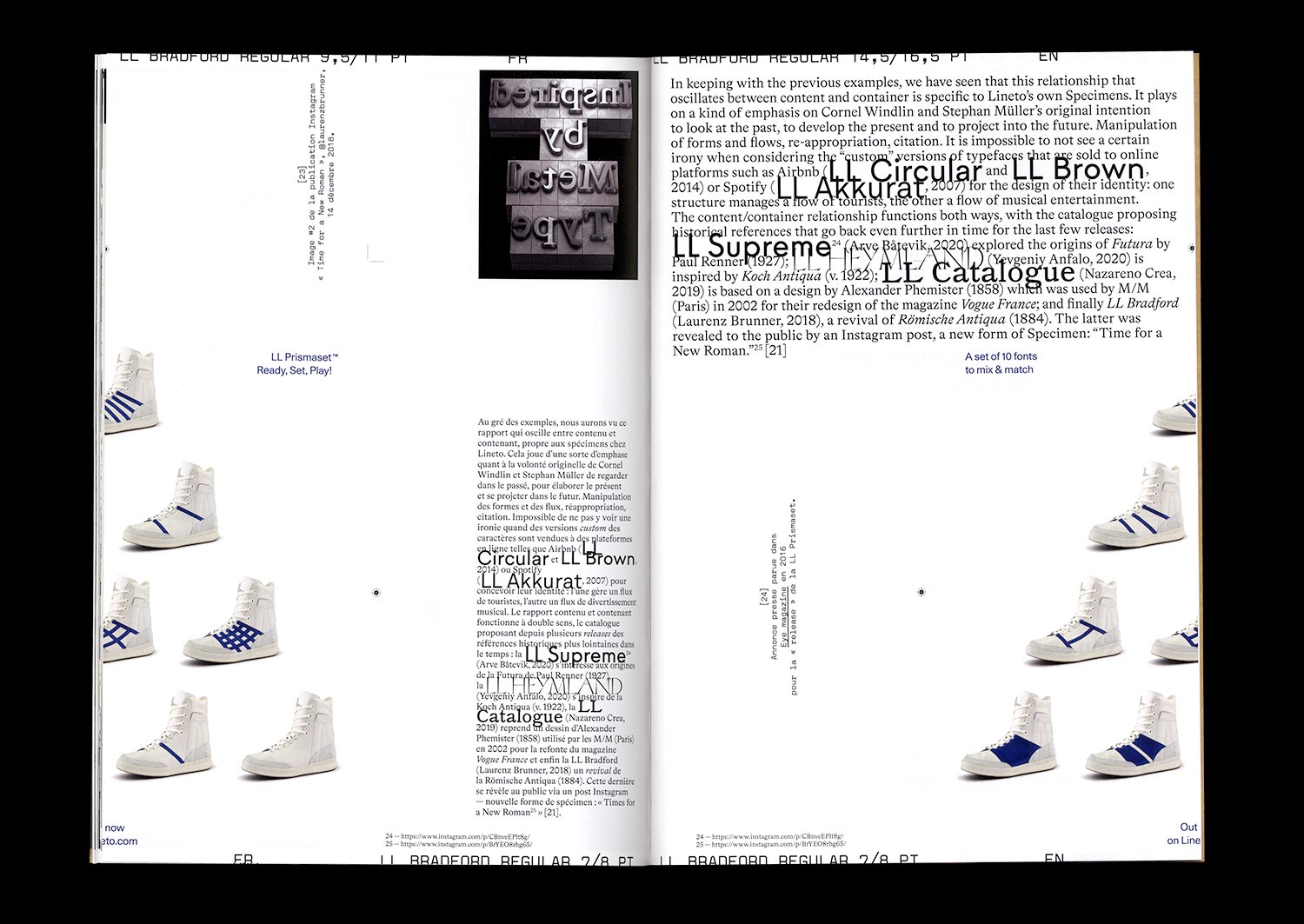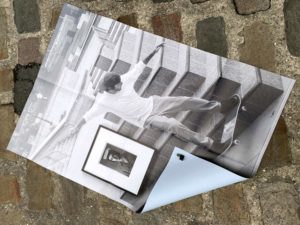Since the end of the 1990s, Batia Suter has been collecting books—second hand for the most part—that she acquires for their iconography, in such a way as to build up an image database that sits on the shelves of her personal library. All of this has become the basic material for an artwork that consists of presenting the images according to a logic of visual editing, providing them with new modalities of appearance and thus new possibilities of interpretation.
Parallel Encyclopedia is, at the time of writing, the artist’s most significant work. Ongoing since 2004, it has taken the form of a number of installations and two imposing publications from Roma Publications published in 2007 and 2016. Each version of the project is characterized by the association of hundreds of heteroclite images (historical, artistic, scientific, and technical), grouped according to typological and formal links. From one system to another, the conditions of presentation of these images taken from books are renewed: the sequencing and seriality of bound pages; constellations or, on the contrary, linear sequences of images reproduced and exhibited on wall panels; constellations or linear sequences of book pages opened and placed on flat mounts. Though the exhibited images are the same, these various exhibition possibilities determine differential readings.
Beyond the fascination that such a project can generate, this text will attempt to seize all of its complexity. To do this, Batia Suter’s work will be re-situated within the context of a history of iconographic practices that run through different fields of activities and knowledge. We will also focus on the trajectory of the images gathered in Parallel Encyclopedia and the effects of the process of remediation to which they are subjected. Ultimately, it will be a question of drawing a figure of the artist as an “editor” and of studying both the function of Graphic Design in the artist’s work and the place that we can attribute to the artist in the field of Graphic Design, a field to which Batia Suter doesn’t directly belong, but one that runs through her productions, and to which she was confronted in a concrete fashion in the context of her collaboration with the Graphic Designer Roger Willems in the design of the two volumes of the encyclopedia that, in fact, is today a reference for many artists, as much as it is for a large number of Graphic Designers.
